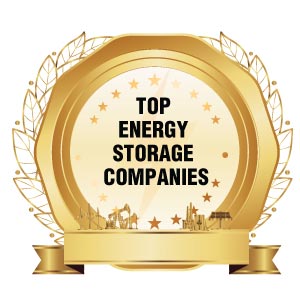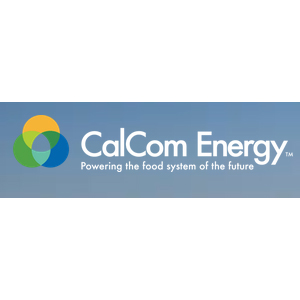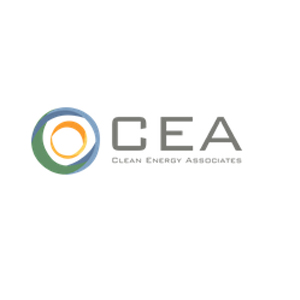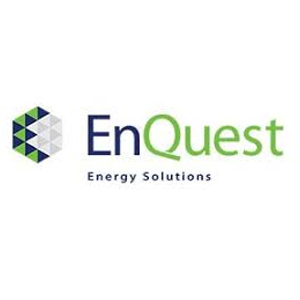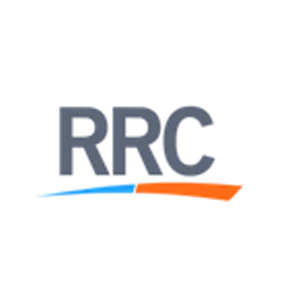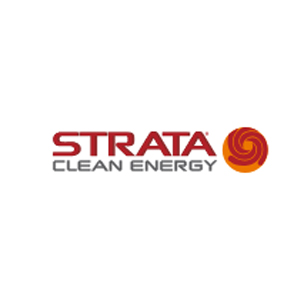\\\\ Top Energy Storage Companies \\\\
\\\\\\\\\\ Top Energy Storage Companies \\\\\\\\\\
-
CalCom Energy
CalCom Energy provides customized, full-service energy solutions for various markets. They offer smart applications to optimize energy usage, helping businesses reduce costs. Based in Fresno, CA, they specialize in solar and energy efficiency, providing tailored services to their clients.
-
Clean Energy Associates
Clean Energy Associates (CEA) is a leading advisory firm specializing in solar PV, energy storage, and green hydrogen. They offer services in market intelligence, engineering, and quality control, helping clients mitigate risk, optimize investments, and promote sustainability across the energy sector.
-
EnQuest Energy Solutions
EnQuest Energy Solutions provides innovative energy solutions to support the energy transition, focusing on sustainable practices. Their offerings include stationary battery storage, THOR electric frac pumps, and mobile power generation. EnQuest aims to deliver clean, low-emission solutions across industries, emphasizing operational efficiency and environmental responsibility.
-
RRC Power & Energy LLC
RRC Power & Energy LLC., is a leading engineering firm specializing in utility-scale renewable energy projects across solar, wind, and energy storage sectors. They offer full-scope technical services to clients in the U.S., Canada, and select global markets, supporting developers, owners, and EPCs.
-
Strata Clean Energy
Strata Clean Energy, a family-owned company, specializes in utility-scale solar and storage projects. They prioritize sustainability and long-term performance, owning over 50% of their developments. Committed to innovation, Strata also emphasizes community engagement while transforming the energy landscape.
More in News
The Rise of Strategic Marketing in Renewable Energy's Global Expansion
Monday, November 24, 2025
The global energy landscape is evolving with renewable energy, transitioning from a subsidy-dependent industry into a cost-competitive, market-driven force that consumers, corporations, and governments increasingly favor. This shift has been propelled by technological advancements, declining costs of wind and solar power, improved energy storage, and supportive policy frameworks, collectively leveling the playing field with fossil fuels. Yet, beyond innovation and economics, strategic marketing has emerged as a pivotal catalyst in this transition, redefining the narrative from niche environmentalism to mainstream economic and social value. As subsidies recede, marketing now plays a central role in shaping demand, positioning renewables not only as a sustainable choice but also as a compelling solution for diverse stakeholders across global markets. Crafting Compelling Value Propositions At the heart of this marketing-led transformation is a nuanced understanding of consumer and corporate motivations. The modern energy consumer, whether an individual homeowner or a multinational corporation, is increasingly sophisticated. While the environmental benefits of clean energy remain a significant driver, the decision-making process is now equally influenced by economic and social considerations. Effective marketing in the renewable energy sector, therefore, goes beyond simplistic "green" messaging. It crafts a narrative that speaks to a broader set of values and aspirations. For individual consumers, this means highlighting the tangible benefits of energy independence, long-term cost savings, and the appeal of being part of a forward-thinking community. Marketing messages are increasingly tailored to showcase how adopting renewable energy can enhance a homeowner's lifestyle, providing not just a cleaner energy source but also greater control over their energy consumption and expenditure. The emotional appeal of contributing to a more sustainable future is a powerful motivator, and successful marketing campaigns are adept at weaving this into a compelling story of personal empowerment and responsible citizenship. For the corporate world, the value proposition is framed around a different, albeit equally compelling, set of priorities. In an era of heightened corporate social responsibility and growing investor scrutiny of environmental, social, and governance (ESG) performance, renewable energy has become a strategic imperative. Marketing efforts in this sphere focus on demonstrating how a commitment to clean energy can enhance brand reputation, attract and retain top talent, and mitigate the risks associated with volatile fossil fuel markets. The narrative here is one of smart business, where sustainability and profitability are not mutually exclusive but are, in fact, inextricably linked. By positioning renewable energy as a driver of innovation, resilience, and long-term value creation, marketing is helping to integrate it into the core business strategies of organizations worldwide. Reaching and Engaging the Modern Energy Consumer The rise of digital marketing has been a game-changer for the renewable energy industry. The ability to target specific audiences with personalized and engaging content has enabled the sector to reach a far broader and more diverse customer base than ever before. Digital platforms have become the primary channels for educating consumers, dispelling myths, and building communities around the shared goal of a clean energy future. Content marketing, in particular, has emerged as a powerful tool for building trust and credibility. By providing valuable and informative content, such as articles, videos, and interactive tools, renewable energy providers can position themselves as trusted advisors rather than merely selling a product. This educational approach is crucial in an industry where the technology and financial models can often be complex and intimidating for the average consumer. Through clear and accessible communication, marketing is demystifying renewable energy and empowering individuals and businesses to make informed decisions. Social media platforms have also become instrumental in amplifying the message of clean energy. They provide a forum for dialogue, enabling a two-way conversation between providers and consumers. This direct engagement helps to build brand loyalty and foster a sense of community. The viral nature of social media allows for the rapid dissemination of positive stories and testimonials, creating a powerful ripple effect that can significantly influence public perception and drive adoption. Building Brands That Inspire and Resonate In a maturing and increasingly competitive market, brand building has become a critical differentiator. A strong brand in the renewable energy sector is one that not only communicates technical competence and reliability but also embodies a set of values that resonate with its target audience. It is a brand that inspires trust, confidence, and a sense of shared purpose. The visual identity of a brand is also a crucial element in conveying its message. The use of clean, modern aesthetics and imagery that evokes a sense of optimism and progress can position a renewable energy provider as a forward-thinking and innovative leader. A well-crafted brand identity can cut through the noise of a crowded marketplace and create a lasting impression in the minds of consumers. As the renewable energy sector continues its upward trajectory, the role of marketing will only become more crucial. The transition to a clean energy economy is not just a technological challenge; it is also a communications challenge. It requires a concerted effort to educate, inspire, and mobilize a diverse range of stakeholders. Marketing is the engine that will drive this effort, shaping public perception, creating market demand, and ultimately, accelerating the adoption of renewable energy on a global scale. The future of the renewable energy industry will be defined not only by the efficiency of its solar panels and wind turbines but also by the effectiveness of its marketing campaigns. By crafting compelling value propositions, leveraging the power of digital media, and building brands that resonate with the values of a new generation of consumers, the renewable energy sector is not just selling a product; it is selling a vision of a cleaner, healthier, and more prosperous future. Subsidies will not power the next wave of growth in renewable energy, but the power of persuasive and strategic marketing.
Revolutionizing the Energy Sector with Blockchain Technology
Monday, November 24, 2025
FREMONT, CA: The energy sector, essential to contemporary society, is experiencing a significant shift fueled by technological innovations. Among these advancements, blockchain technology is a formidable force capable of changing how energy is generated, shared, and utilized. With its ability to enhance transparency, security, and efficiency, blockchain is set to redefine the energy industry. Applications of Blockchain in the Energy Industry Blockchain technology transforms the energy industry by enabling innovative solutions across several key areas. One of the primary applications is peer-to-peer energy trading, where blockchain allows consumers and producers to trade energy directly, bypassing traditional intermediaries. Transactions are automated through smart contracts, which reduce costs and enhance efficiency, empowering consumers to sell surplus power from renewable sources, such as solar panels. In renewable energy certificate (REC) tracking, blockchain provides a transparent, verifiable system for managing RECs, ensuring the authenticity of renewable energy claims and preventing fraudulent practices. Similarly, blockchain plays a pivotal role in supply chain management by offering end-to-end visibility of energy resources, helping to track their origin and journey and reducing the risk of counterfeit products within the supply chain. Blockchain also supports grid management and optimization by enabling smart grids that facilitate real-time data sharing and automated control, improving grid reliability and energy efficiency. Additionally, energy data management is enhanced with blockchain's secure storage capabilities, allowing for collecting and analyzing extensive data on consumption patterns, generation, and market information to inform decision-making and predictive analytics. Benefits of Blockchain in the Energy Industry Blockchain brings numerous benefits to the energy sector, notably transparency and trust, as its immutable ledger ensures a reliable, transparent record among all ecosystem participants. The security afforded by cryptographic techniques mitigates risks related to cyberattacks and data breaches, safeguarding transactions and sensitive information. With the efficiency gained through automation and streamlined processes, operational costs are reduced, and overall productivity is improved. Blockchain also supports sustainability by promoting renewable energy adoption through peer-to-peer trading and transparent REC tracking. At the same time, the resilience offered by decentralized networks reduces dependency on centralized infrastructure, strengthening the robustness of energy systems. Integrating blockchain technology in the energy sector presents transformative use cases and real-world applications that enhance efficiency, transparency, and sustainability. One significant area is energy trading and marketplaces, where blockchain enables peer-to-peer energy trading. This decentralized approach allows consumers and producers to transact directly, removing the need for intermediaries and reducing costs. Furthermore, smart contracts can automate trading processes and optimize market operations, further driving down transaction expenses. In renewable energy certification, blockchain ensures the authenticity and integrity of Renewable Energy Certificates (RECs), effectively preventing fraud and double-counting. Additionally, it enhances supply chain transparency by tracing the origin and journey of renewable energy, thereby improving visibility and accountability. Blockchain also plays a crucial role in grid modernization and the integration of renewable energy. It facilitates the seamless incorporation of distributed energy resources (DERs), such as solar panels and wind turbines, into existing grid infrastructure. By providing real-time data and automated control, blockchain optimizes grid operations, improves reliability, and minimizes energy losses. In energy efficiency and demand response, blockchain can support creating incentive programs that reward energy-efficient behaviors, including time-of-use pricing and demand response initiatives. By tracking energy consumption patterns, blockchain empowers consumers to make informed decisions and optimize their energy usage effectively. As the energy industry evolves, blockchain technology is poised to play a pivotal role in shaping a more sustainable, efficient, and equitable energy future. By embracing this innovative technology, the industry can unlock opportunities and address pressing global energy challenges.
Scaling Biomethane Across Europe's Energy Systems
Monday, November 24, 2025
Europe stands at a pivotal juncture in its energy transition, actively pursuing decarbonization across all sectors and bolstering energy independence. Within this ambitious landscape, sustainable biomethane has emerged as a crucial and rapidly expanding renewable fuel. From Waste to Wheels: Production and Applications The foundation of Europe's biomethane supply lies in the continent's abundant organic waste streams. Agricultural residues, municipal solid waste, food processing byproducts, and sewage sludge serve as primary feedstocks for anaerobic digestion, the core process that generates biogas. This raw biogas, a mixture of methane and carbon dioxide, then undergoes rigorous upgrading processes to remove impurities and increase its methane content, transforming it into biomethane—a renewable gas chemically identical to natural gas. This compatibility is a cornerstone of the industry's efficiency, allowing biomethane to be seamlessly injected into existing gas grids, transported across vast distances, and utilized in diverse applications without requiring significant infrastructure overhauls. The continent featured over 1,500 biomethane-producing facilities, with a substantial year-on-year increase observed. This expansion is geographically widespread, with biomethane plants now operational in virtually every European country. While certain nations have historically led in terms of installed capacity, others are rapidly catching up, demonstrating vigorous investment activity and a clear commitment to scaling up production. The sheer volume of biomethane generated is impressive, with combined biogas and biomethane production reaching significant levels, representing a growing share of Europe's total natural gas consumption. Projections indicate a continued upward trajectory, with substantial investment already earmarked to boost production capacity further in the coming years. A significant proportion of the biomethane produced in Europe is channeled towards the transport sector. As a direct replacement for fossil natural gas in vehicles, biomethane offers a compelling solution for decarbonizing heavy-duty transport, urban bus fleets, and even maritime applications. The network of gas refueling stations across Europe, encompassing both compressed natural gas (CNG) and liquefied natural gas (LNG) infrastructure, is increasingly offering biomethane, often in high percentages. This widespread availability underscores the fuel's practicality and its growing acceptance as a sustainable alternative. The development of bio-LNG production facilities is particularly noteworthy, as they cater to the needs of long-haul transportation and marine vessels. Beyond transport, biomethane finds applications across various other sectors, contributing to a holistic energy transition. It is increasingly utilized for heat generation in residential and commercial buildings, as well as in industrial processes and for flexible electricity generation through combined heat and power (CHP) systems. Its dispatchable nature and ability to be stored provide valuable stability and resilience to the energy grid, complementing intermittent renewable sources like wind and solar. This versatility is a key attribute of biomethane, allowing it to address diverse energy demands and contribute to decarbonization across multiple fronts. Policy Drivers and Technological Advancements A supportive policy and regulatory environment underpins the robust growth of the European biomethane industry. European Union directives and national energy strategies consistently highlight the critical role of biomethane in achieving climate targets and enhancing energy security. Frameworks promoting the uptake of renewable energy, such as revised renewable energy directives, facilitate the integration of biomethane into the gas grid and support cross-border trade. Mechanisms that incentivize biomethane production, such as feed-in tariffs and consumption-based incentives, are crucial in fostering investment and making the fuel economically viable. The development of certification schemes and databases for tracking renewable gas consumption further strengthens market transparency and confidence. Technological advancements are continuously optimizing biomethane production processes. Improvements in anaerobic digestion technologies enhance efficiency and expand the range of usable feedstocks. Innovations in gas upgrading techniques lead to higher methane purity and reduced energy consumption. There is also a growing focus on integrating biomethane production with other sustainable practices, such as the valorization of digestate (the residue from anaerobic digestion) as a nutrient-rich biofertilizer, thereby promoting a circular economy approach. Research and development efforts are also exploring novel methods for biomethane production, including the potential for synthetic biomethane using green hydrogen and biogenic carbon dioxide. Economic Dynamics and Future Outlook While initial investment costs for biomethane plants can be substantial, decreasing CAPEX due to technological maturation and economies of scale, coupled with supportive policies, improves economic attractiveness. The availability of feedstock, energy inputs, and labor influences operating costs. The value of biomethane is also influenced by its environmental attributes, particularly its ability to reduce greenhouse gas emissions compared to fossil fuels. The interplay of these economic factors, alongside a growing demand for sustainable energy solutions, continues to shape the market landscape for biomethane suppliers. The future outlook for sustainable biomethane fuel suppliers in Europe is one of continued expansion and integration into the broader energy system. The continent's ambitious decarbonization goals, coupled with the strategic imperative for energy independence, ensure a sustained demand for renewable gases. With significant investment flowing into the sector and ongoing policy support, the installed capacity for biomethane production is set to increase substantially over the coming decade. As the industry matures, further efficiencies in production, enhanced supply chain optimization, and greater cross-border collaboration are anticipated, solidifying biomethane's position as a cornerstone of Europe's sustainable energy future. The industry's ability to transform waste into a valuable, versatile, and environmentally beneficial fuel positions it as a key enabler of a circular and climate-neutral European economy.
Europe's Energy Transition: From Siloed Generation to Hybrid Asset Management
Friday, November 21, 2025
The European energy landscape transcends the simple addition of renewable capacity. The industry is shifting from a model of distinct, siloed generation technologies toward a paradigm of hybrid asset management—a strategic approach in which the value lies not in individual electrons produced by wind, solar, or gas, but in the orchestrated interaction among them. The integration of traditional fossil fuel portfolios with variable renewables and storage has become the central operational challenge and economic opportunity for European utilities and asset managers. The Strategic Pivot: From Baseload to Flexibility For decades, the asset management philosophy in Europe was predicated on "baseload"—running large thermal plants flat-out to maximise utilisation. Today, that logic has inverted. Traditional energy portfolios are no longer viewed as static generation fleets but as balancing mechanisms necessary to support an intermittent renewable grid. This shift is most visible in the management of existing gas-fired generation. Rather than being retired immediately, modern Combined Cycle Gas Turbines (CCGTs) are being repurposed for operational use. Asset managers are investing in retrofits that allow these massive machines to ramp up and down with unprecedented speed, effectively treating them as giant batteries. The economic model for these assets has moved from "energy-only" markets (selling kWh) to "capacity and ancillary services" markets (selling reliability and frequency response). In this hybrid portfolio, the gas plant serves as the hedge against the weather-dependent risk of wind and solar assets, creating a diversified risk profile that is more attractive to investors than pure-play renewables or pure-play fossil portfolios. A defining trend in the current European market is the physical transformation of brownfield sites into Clean Energy Hubs. The industry is capitalising on the immense value locked in the grid connections of retiring coal and older gas plants. Instead of abandoning these sites, asset managers are leveraging their robust transmission infrastructure—which would take a decade to build from scratch—to host hybrid developments. These hubs are becoming complex ecosystems where utility-scale battery energy storage systems (BESS) sit alongside new solar arrays and synchronous condensers (rotating machines that provide grid inertia without generating power). This approach solves one of Europe's most critical bottlenecks: grid congestion. By co-locating storage with generation behind a single connection point, operators can "peak shave"—storing excess solar electrons at noon and dispatching them in the evening using the same export cable that once carried coal power. This physical hybridisation is allowing legacy portfolios to transition their asset base without losing their prime real estate on the grid. The Storage Bridge: Beyond Lithium-Ion While lithium-ion batteries remain the workhorse of short-duration storage, the industry state-of-play is expanding into longer-duration and thermal storage technologies to bridge the gap between renewable supply and traditional demand. In hybrid portfolios, storage is no longer just an arbitrage tool (buy low, sell high). It is being integrated as a yield optimiser. For example, solar assets are increasingly paired with 2-4 hour battery systems not just to shift energy, but to firm up the delivery profile, allowing variable solar farms to sign "baseload-like" Power Purchase Agreements (PPAs) that command a premium price. Thermal storage is seeing a renaissance within traditional portfolios. Innovative projects are exploring converting decommissioned thermal plants into thermal batteries, using molten salt or hot rocks to store renewable heat that can then drive existing steam turbines. This allows asset owners to retain the mechanical side of their thermal plants (turbines, generators) while replacing the fossil-fuel boiler with a clean heat source, effectively decarbonising the asset while preserving the capital investment in the machinery. Digital Orchestration: The Virtual Power Plant (VPP) The glue holding these diverse assets together is software. The industry is witnessing a massive deployment of VPP technology. A VPP aggregates thousands of decentralised assets—a wind turbine in the North Sea, a battery in Bavaria, and a flexible gas peaker in Italy—and presents them to the grid operator as a single, dispatchable power plant. This digital layer is where the proper "integration" happens. Advanced algorithms and Artificial Intelligence (AI) are now standard tools for portfolio managers. These systems ingest terabytes of weather data, market-pricing signals, and asset-health diagnostics to support real-time operational decisions. They determine whether a battery should charge immediately or whether a gas plant should ramp up generation, and they evaluate whether a wind farm should curtail output to avoid negative prices or instead divert excess energy into a co-located hydrogen electrolyser for storage. The sophistication of these trading platforms has become a key competitive differentiator. Asset managers are moving away from manual dispatch towards automated, algorithmic trading that can capture value across multiple markets simultaneously—balancing the frequency of the grid while also selling energy in the day-ahead market. The economic landscape for hybrid asset management is being reshaped by a move away from government subsidies toward merchant exposure. As feed-in tariffs expire, renewable assets are being forced to compete in the open market. This exposure creates volatility, which hybrid portfolios are uniquely designed to absorb. The regulatory environment in Europe is slowly adapting to support this integration. New grid codes are beginning to recognise and remunerate "hybrid" connection points, allowing operators to share capacity between generation and storage more freely. However, the industry still navigates a complex web of capacity mechanisms that vary by country, requiring asset managers to be as adept at regulatory compliance as they are at engineering. The lines between "renewable developer," "fossil fuel operator," and "technology provider" are blurring. The successful energy company is a hybrid asset manager that treats electrons as fungible commodities, regardless of their source. The transition is no longer about replacing one technology with another; it is about integrating them all into a unified, intelligent machine.
Energy Procurement's Vital Role in Business Success
Friday, November 21, 2025
Fremont, CA: Energy procurement is a strategic process for an organization to obtain energy from any source, be it electricity, gas, or renewables. Sourcing, contract management, negotiations, and price forecasting are included in the procurement process to optimize energy usage and cost. This will help businesses stabilize energy costs amid fluctuating market conditions, regulatory changes, and geopolitical factors with the help of fixed-rate contracts or long-term agreements. Predictability helps businesses budget more effectively, reducing financial uncertainty and enabling better resource allocation. Energy procurement allows enterprises to analyze consumption patterns and identify areas for efficiency improvements. By understanding energy usage, companies can implement strategies such as demand response, energy efficiency programs, and investing in renewable energy sources. These measures lower energy bills and contribute to a more sustainable operational model. The energy market has various risks, including price volatility, supply chain disruptions, and regulatory changes. Effective energy procurement helps businesses mitigate these risks by diversifying their energy sources and suppliers. By sourcing energy from multiple suppliers or investing in alternative energy solutions, companies can reduce their dependency on any single source, thus safeguarding against potential disruptions. Energy procurement strategies can include hedging mechanisms that protect businesses from price spikes. These risk management strategies ensure that companies remain resilient in fluctuating energy markets, helping them maintain operational stability. Many jurisdictions offer incentives for businesses that engage in sustainable energy practices, such as tax breaks or grants. By strategically procuring energy, companies can leverage these incentives, reducing operational costs while contributing positively to the environment. Energy procurement also involves navigating a complex landscape of regulations and compliance requirements. Staying informed about regulatory changes also allows businesses to take advantage of incentives and programs that promote energy efficiency and sustainability. The proactive approach minimizes compliance risks and positions companies as leaders in their respective industries. Effective energy procurement ensures businesses comply with these regulations, thus avoiding potential fines and legal issues. Engaging in energy procurement often leads to establishing strategic partnerships with energy providers, consultants, and technology firms. The partnerships can facilitate access to innovative energy solutions and technologies like smart grids and energy management systems. By leveraging these innovations, businesses can enhance their energy efficiency and optimize their overall energy strategy. Energy procurement is a vital component of modern business strategy. Businesses can control costs, mitigate risks, enhance sustainability, ensure compliance, and foster innovation by effectively managing energy acquisition. Embracing energy procurement as a strategic priority is a cost-saving measure and an essential step toward building a resilient, sustainable, and forward-thinking organization.
Revolutionizing Natural Gas Storage: Strategies and Solutions
Thursday, November 20, 2025
Fremont, CA: Advancements in natural gas storage technologies are revolutionizing energy storage and distribution. Innovations in underground, compressed, liquefied, and adsorption storage techniques improve efficiency and sustainability within the natural gas industry. Underground natural gas storage remains the most widely used method for storing natural gas, involving gas injection into porous rock formations, salt caverns, or depleted oil and gas reservoirs. Although this method has been used for a long time, innovations have significantly improved its efficiency and safety. Integrating advanced monitoring systems allows for real-time data collection, helping detect potential leaks and optimize storage processes. Enhanced geological modeling and simulation techniques have also increased storage efficiency by improving the understanding of rock formations and gas flow, maximizing storage capacity, and extending the life of underground storage systems. Compressed natural gas involves storing natural gas at high pressures within specially designed containers. Recent breakthroughs in this field focus on the materials used to construct these storage tanks. Using lightweight, high-strength composite materials such as carbon fiber and fiberglass-reinforced composites has significantly improved storage capacity while reducing the weight of tanks. These innovations make CNG storage systems more efficient and cost-effective. Advances in pipeline technology and compression systems are enhancing the distribution of compressed natural gas, allowing for more efficient and widespread delivery to residential, commercial, and industrial users. Liquefied natural gas (LNG) storage involves cooling natural gas to very low temperatures to convert it into a liquid form, reducing its volume significantly. Innovations in LNG storage include improved cryogenic tank designs and materials that enhance the thermal efficiency of storage systems. Vacuum-insulated and double-walled tanks reduce heat transfer and minimize gas loss during storage. Floating LNG platforms have also emerged, allowing for offshore liquefaction, storage, and transportation of LNG, which reduces reliance on costly onshore infrastructure. In addition, small-scale LNG storage solutions are gaining popularity, offering cost-effective and flexible options for areas without access to large pipeline networks. Adsorption storage is a newer method that utilizes porous materials, such as activated carbon or metal-organic frameworks (MOFs), to store natural gas at lower pressures and temperatures. MOFs have demonstrated significant potential due to their ability to store substantial amounts of gas compactly. Using these high-capacity adsorbents could lead to more efficient and cost-effective storage systems.


